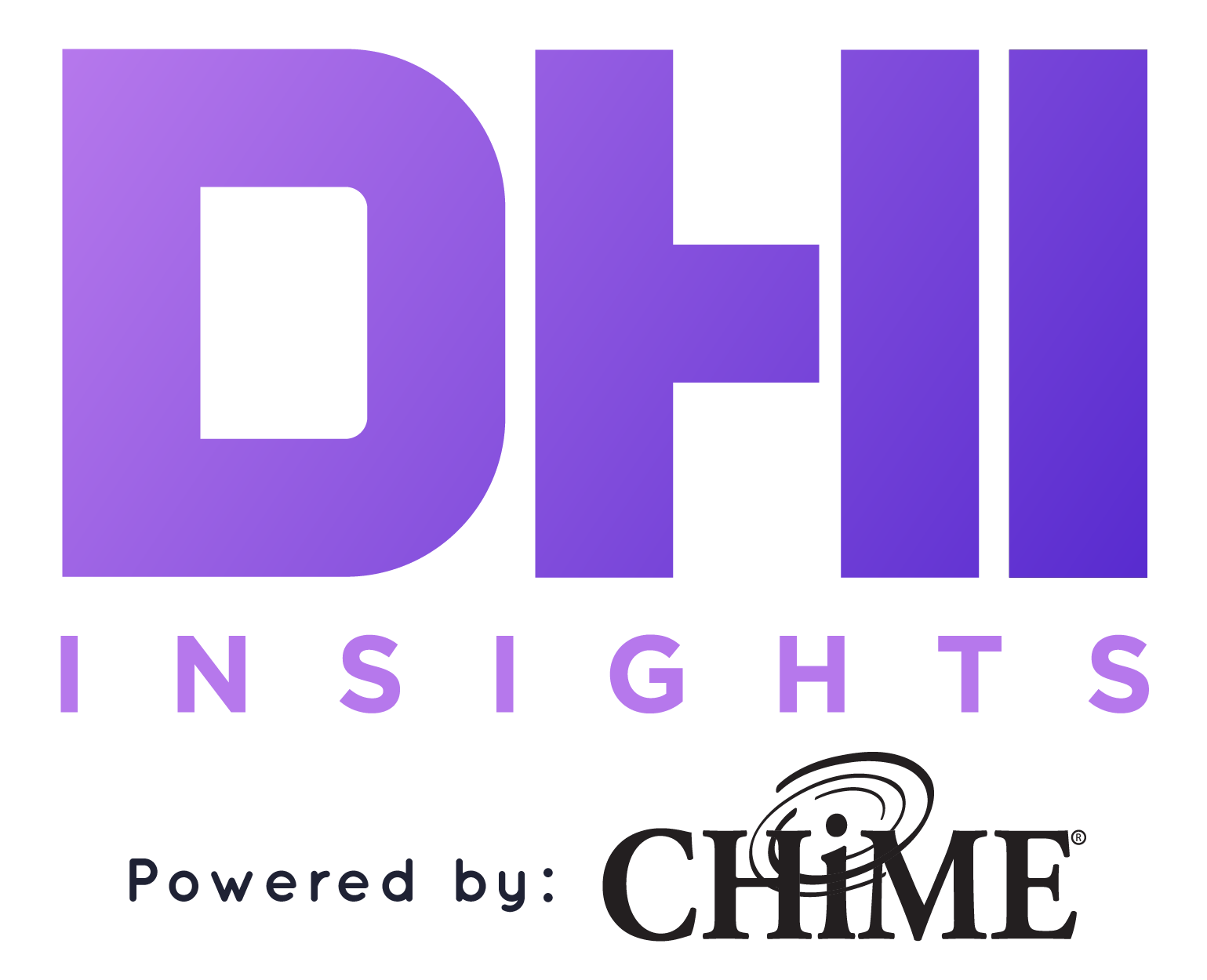
Welcome to our most FAQ page.
Frequently asked questions
How do I access my link to the 2025 DHMW survey?
Representatives of provider healthcare organizations (HCOs) desiring to participate in the 2025 DHMW survey, access the survey through CHIME’s Digital Health Analytics portal. Once the survey is live for submissions, survey links are posted under the "My DHMW Survey Links" tab.
IF YOU PARTICIPATED IN THE 2025 DHMW SURVEY: You may access your portal at any time. Your pre-populated survey link will be available April 1, under My DHMW Survey Links.
IF YOU ARE NEW, Please register here with the DHA Portal to participate and our DHMW team will contact you with your credentials.
Can I save the survey and finish it later?
Yes, to save your survey, you MUST select the “Previous/Next Page / Save” button at the bottom of the page. Failure to do so before leaving the tool will result in lost data of that page.
Is there a way to get a copy of the full survey so I can determine if we want to participate or to research the questions before inputting the answers online?
Yes. A generic Word document version of the 2025 survey instrument will be made available.
Can we fill-out one survey for our health system (i.e. 3 hospitals, 7 clinics and 2 LTPAC facilities), or would do we need to fill out a survey for each facility?
The DHMW survey allows for the profiling of three types of HCOs:
-
Acute Hospitals
-
Ambulatory clinics
-
Long-term/Post-acute care (LTPAC) facilities (e.g. skilled nursing facilities)
As the DHMW survey program is a strategic planning tool (as well as a recognition program), the power of the DHMW program is realized in the accuracy of the inputted data. Accordingly, HCOs can select the approach for profiling the entities within their organization which best reflects their needs and situation.
The following reflect different ways HCOs can participate in this year’s survey:
ONE ACUTE, AMBULATORY and/or LTPAC SITE… ONE SURVEY
An individual care site (albeit acute care facility, ambulatory clinic or LTPAC) as a standalone entity or as part of an HCO system can complete their own survey and receive their own score and report.
This works best for HCO systems when there is great variability in an HCO’s deployment and use of digital health technologies across its varied care sites.
MULTIPLE ACUTE and/or AMBULATORY SITES… ONE SURVEY
HCOs with multiple acute care facilities and/or ambulatory clinics may use one survey to report on the aggregated digital health profile of their organization (excluding LTPAC facilities) if there is minimal variation in the digital health profile of these facilities/clinics.
Under this scenario, the HCO system in the example in the above question using one survey for the three hospitals and seven clinics would receive:
- One DHMW score and report for the three acute care hospitals
- One DHMW score and report for the seven ambulatory clinics
The DHMW program defines a survey with “minimal variation” as one where at least 80% of the responses are shared by the profiled entities.
In the 20% of situations where variability does exist, we offer the following for guidance:
EXAMPLE 1: “Check one” and “Check all that apply” questions:
“Check one” and “Check all that apply” questions present binary response options (“YES this is true for our HCO”; “NO this is not true for our HCO”). An affirmative response is warranted when the issue under question is true for 50% or more of the aggregated facilities.
Which of the following information security frameworks does your organization use to guide your information security program?
(Check all that apply)
- NIST cybersecurity framework
- COBIT
- ISO 27000 series
- HITRUST
- SANS Top 20/CIS critical controls
- Other/Self-developed
- No framework adopted
If you are answering this question for 3 hospitals and 7 clinics (total of 10 care sites), and only 3 of the 10 entities use the HITRUST framework, leave the HITRUST response option unchecked as HITRUST as a framework is used by less than 50% of the facilities.
If you are answering this question for 3 hospitals and 7 clinics (total of 10 care sites), and 5 of the 10 entities use the HITRUST framework, check the HITRUST response option as HITRUST as a framework is used by 50% or more of the facilities.
EXAMPLE 2: Numerical Range questions
Questions presenting response options in numerical ranges (e.g. percentages) should be answered using a weighted average approach.
What percentage of your pharmaceutical supply orders are electronically generated once they reach a predetermined par level?
(Check one)
- 81-100%
- 61-80%
- 41-60%
- 21-40%
- 1-20%
- None
If you are answering this question for 3 hospitals and 7 clinics (total of 10 care sites), and 3 of the 10 entities order 100% of supplies electronically while the remaining 7 order 0% electronically, check the “21-40%” response option box since the weighted average for the entities profile falls within this category:
((3 x 100% = 300%) + (7 x 0% = 0%)) / 10 entities = 30%
ONE ORGANIZATION… MULTIPLE SURVEYS
HCOs with multiple acute care facilities and/or ambulatory clinics where less than 80% of the responses are shared by the profiled entities, will need to complete a survey for each unique facility/clinic profile.
EXAMPLE: In the health system example above, 2 of the hospitals and 3 of the clinics share at least 80% of the responses, the one remaining hospital shares at least 80% of the responses with the 4 remaining clinics, and the two LTPAC facilities share at least 80% of the responses;
- one survey could be used for the 2 hospitals and 3 clinics that share at least 80% of the responses
- one survey could be used for the 1 hospital and 4 clinics that share at least 80% of the responses
- one survey could be used for the 2 LTPAC facilities
Under this scenario, the HCO would receive;
- two Acute reports/scores
- two Ambulatory reports/scores, and one LTPAC report/score
Are all questions scored?
No. Questions under the categories of “Organizational Information” and “General Information” used for identification and benchmarking purposes only which will not affect Most Wired status.
Should outsourcing or application service provider models be included?
Yes.
Should depreciation and IT expenses in other departments be included in IT operating expense?
Yes, these expenses are important to include for total operating costs.
What should be included in IT capital?
We usually include the costs for acquisition, licensing and implementation for infrastructure (hardware, storage, network, data center) and software, as allowed by what can be capitalized per GAAP. As an example, we would include the cost of the PACS application, hardware, etc. But we would not include the digital acquisition devices that we added or swapped out over time. IT capital expense includes IT related capital included in the budget of other departments (e.g., lab, radiology, etc.), if known or can be reasonably estimated. Include the total value of capital leases to be signed in the current year.
Our organization is planning to have this technology in place later this year. Can I go ahead and answer the question as if we already had it in place?
All technology should be in place by 3/31/2025.
When will I know if my organization is recognized?
E-mail notifications will be sent by late-August to all participants to let them know if they received a Most Wired designation or not, your organizations benchmark report will be included at that time as well.
I submitted my survey, but found a question was answered incorrectly. Can I correct this?
Yes. Corrections to survey submissions are allowed up to two calendar weeks after the date of the survey close. Not amendments will be accepted past the deadline.
Certification Level Definitions
Levels 9–10
In addition to meeting the criteria for levels 1–8, organizations in levels 9 or 10 are often leaders in healthcare technology who actively push the industry forward. Not only have many of them implemented advanced technologies, but they often leverage these technologies in innovative ways and have encouraged deep adoption across their entire organization. As a result, they are realizing meaningful outcomes, including improved quality of care, improved patient experience, reduced costs, and broader patient access to healthcare services. Some of the advanced technologies used to achieve these outcomes include telehealth solutions, price transparency, cost-analysis tools, access to data at the point of care, and tools to engage patients and their families throughout the care process.
Levels 4–6
Organizations in levels 4–6 have made progress in expanding their core IT infrastructure to support internal strategic initiatives. Often, they have implemented basic technologies to protect patients’ health and financial information (e.g., firewalls, spam/phishing filters, endpoint encryption), but they may lack more advanced technologies that would mediate other vulnerabilities. Many are actively collecting patient data electronically; however, they may not effectively leverage the data they collect and may encounter significant barriers in exchanging patient data with external organizations.
Levels 7–8
Organizations in levels 7 and 8 meet the criteria for being designated as Most Wired. These organizations have deployed technologies and strategies (e.g., population health/cost-of-care analytics, HIEs/integration engines, and patient portals) to help them analyze their data and are starting to achieve meaningful clinical and efficiency outcomes. Some of these organizations are experimenting with more advanced technologies, like telehealth, that expands access to care.
Levels 1–3
Organizations in levels 1–3 are in the early stages of developing their technology infrastructure and may still be transitioning, or may have more recently transitioned, to electronic formats for collecting patient data and performing clinical activities. Some may have deployed technologies that capture data (e.g., EMRs, ERP solutions, revenue cycle management solutions) but may not fully leverage the functionality these technologies offer. Additionally, these organizations may still be working to help end-users adopt the technologies that have been implemented.




![healthcare-solutions_logo-rgb-tall-2-blue-1-line[1] (2) healthcare-solutions_logo-rgb-tall-2-blue-1-line[1] (2)](https://info.dhinsights.org/hs-fs/hubfs/healthcare-solutions_logo-rgb-tall-2-blue-1-line%5B1%5D%20(2).png?width=954&name=healthcare-solutions_logo-rgb-tall-2-blue-1-line%5B1%5D%20(2).png)